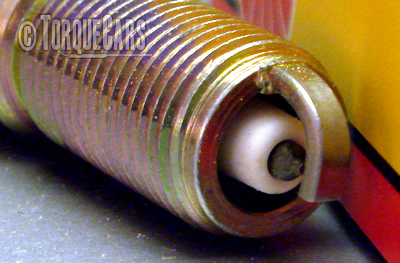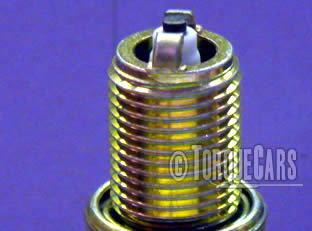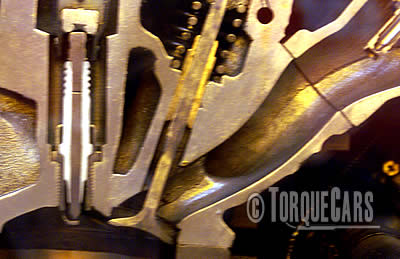Spark plugs
"A bright spark"

One of the most essential elements in an engine is the spark plug which is often overlooked.
The stronger and larger the spark the better the combustion.
A bigger spark will ignite the air/fuel charge more effectively.
It is the burn rate and expansion of the flame front which causes the piston to change direction and produces the Power stroke.
Peak power is achieved when the flame front is at the point of maximum expansion. It is therefore essential that this happens at the same point each time and in each cylinder. The spark initiates this burn so a good strong consistent spark does much lot to give a consistent burn.
Spark plugs are heat rated. Running with a plug that is too hot can cause premature ignition which can cause damage to your engine.
Spark plug technology has come a long way since the early days, new materials are in use which have lower resistance and longer life cycles. A set of modern Iridium plugs will typically last for 40,000 miles and will not require regapping or deglazing in its life cycle.
Copper tipped spark plugs actually benefit from a deglazing which can be done with some Emmery paper, sanding paper or a soft wire brush but you much be careful not to scratch the contacts or ceramic glaze. This will maintain the economy and efficiency of the engine as the glazing inhibits the spark consistency and strength.

There are a number of different electrode types. The overall aim is to get the biggest spark. We are talking fat as well as long. A good spark causes a much better burn. We have split tip electrodes, double and triple electrodes.
For most drivers though you will not notice a difference between these and a good set of standard plugs with a copper core. You will only get one spark no matter how many electrodes you have although a multi electrode plug may last longer.
Fitting spark plugs.
Fitting plugs to a car is a simple job which even the most mechanically inept can perform. Ensure you have the correct tool. Locate the 4 leads going into the center of the engine.
You may need to remove an engine cover or covers which are usually made of plastic and lightly screwed or clipped on (most cars we see have 4 cylinders in line but there are many other engine configurations around, 5 cylinder engines will have 5 leads and a V6 will have 2 banks of 3 but the idea is the same with one lead for each plug at the top of each cylinder.)

A cross section of an engine showing the spark plug cross section (white) to the left of the image.
We recommend changing plugs one at a time to avoid getting the leads mixed up.
The leads and plugs follow a set firing order and if the leads are put in the wrong plugs you could damage your engine.
Working from left to right take out the first plug using the removal tool. A plug will tell you a lot about the condition of your engine. Place them in order of removal for later inspection.
The most important point of putting the new plug in is to get it straight. Fit the plug only finger tight. In some engines you will be able to reach the plug tip easily with your fingers, in other engines you will need to use the tool to get a reach - if this applies to you just hold the tool like a pencil and do not use any leverage at first.
Whichever method you use please ensure that you only fit it finger tight initially. When it is as tight as you can get with your fingers pull another quarter turn on it using the plug tool.
The engine block is softer than the plugs so any damage from cross threading them is going to occur on the engine. (If this does happen a helicoil or re cutting the thread will usually fix the cross threaded hole.)
Next move on to the next plug and repeat. When you have replaced the plugs look at each of the old plugs. They should all be the same colour indicating a balance in the engine firing and fuelling.
A healthy plug has a dark grey soot on it.
A light grey or white soot indicates that the engine is running too lean.
Black soot indicates that it is running too rich.
Oily or greasy plugs can indicate major engine wear and you should investigate this more fully.
Cracks on the plug can indicate problems with excessive heat and should be investigated especially if present on 2 or more plugs.
Please join us in the forum for more technical information about spark plugs and spark plug selection for your vehicle application.
If you liked this page please share it with your friends, drop a link to it in your favourite forum or use the bookmarking options to save it to your social media profile.
Check out TorqueCars new YouTube channel, and see their awesome new content...
Feedback
Please use our forums if you wish to ask a tuning question, and please note we do not sell parts or services, we are just an online magazine.
Help us improve, leave a suggestion or tip
